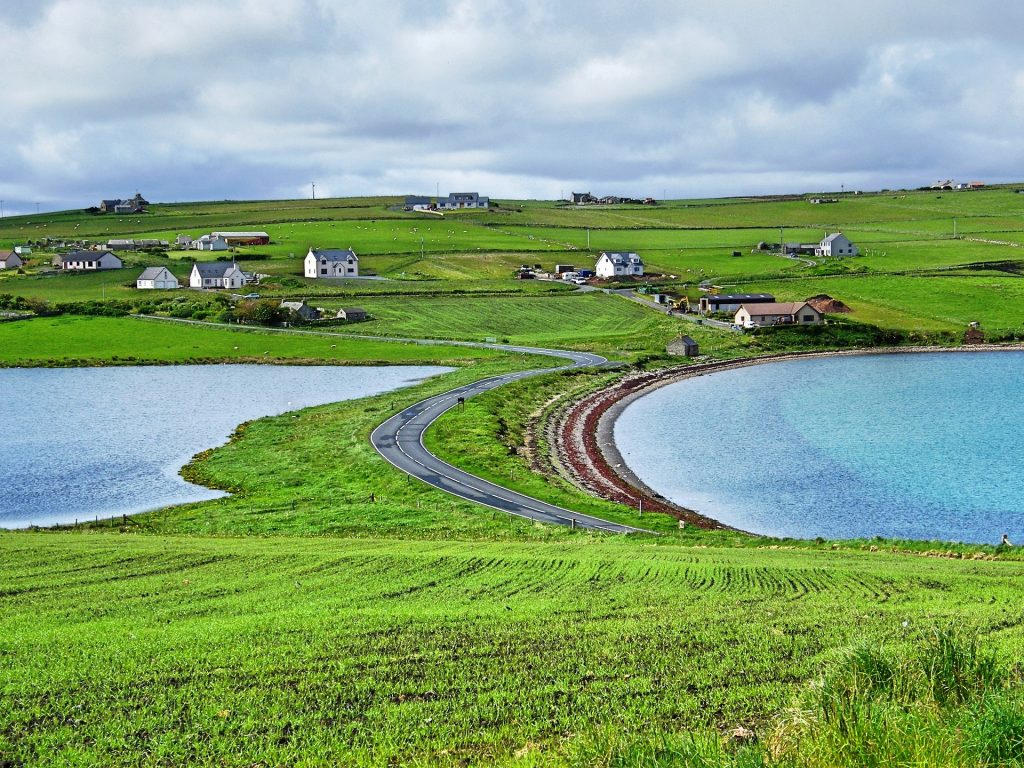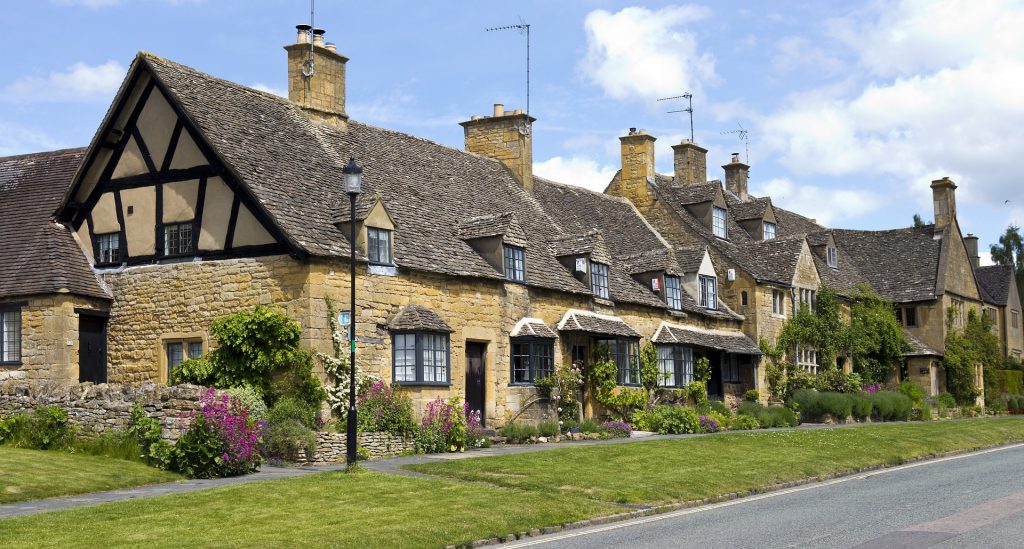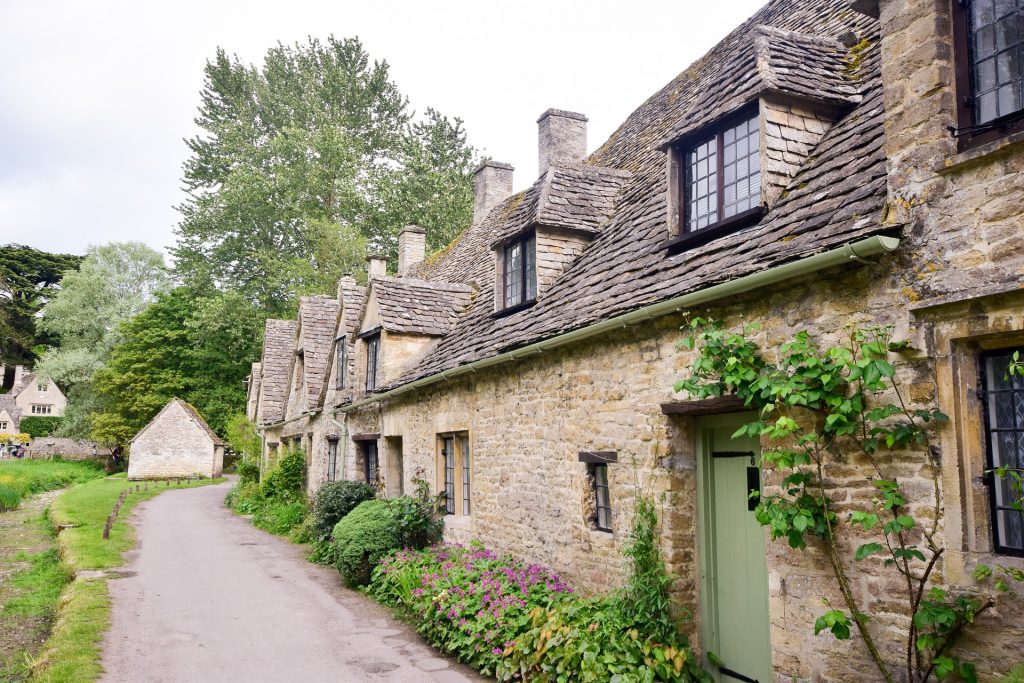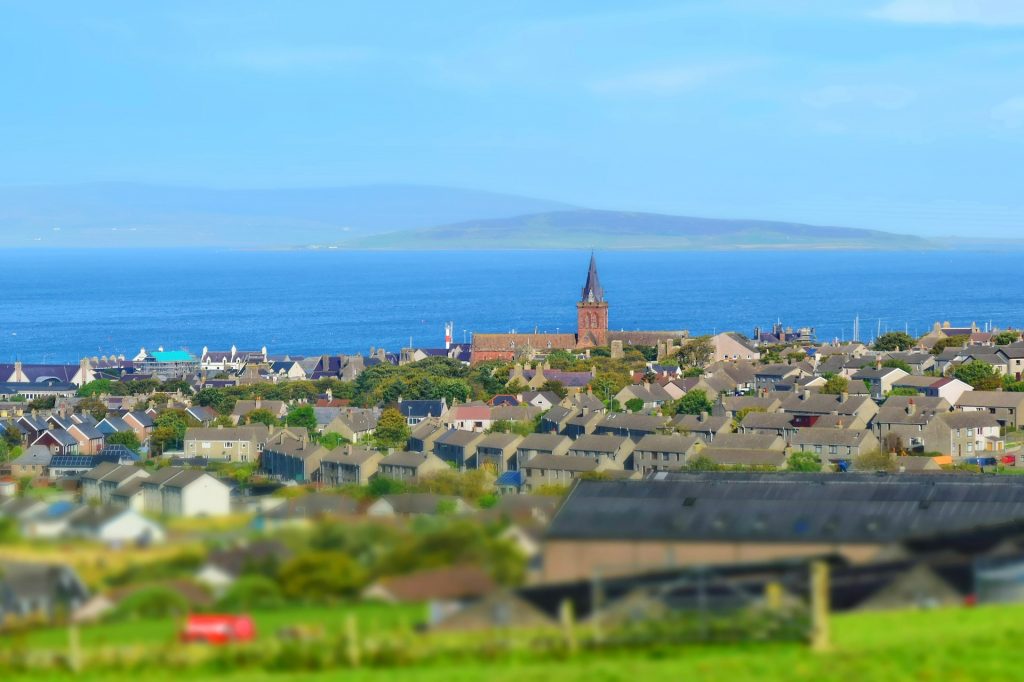Pack your bags. These are the best British rural places to live in
Those looking to trade the urban life for a charming rural dwelling should pay attention to the living standards offered by each region. To make things easier, a recent survey did a comprehensive analysis and came up with a list of the best British rural areas.
Rural Britain has been a thing of stories and poetry but in recent times, behind the idyllic landscape, there lays an economic struggle with local businesses suffering from the lack of infrastructure, especially in remote areas, and form the brain-drain which makes youngsters move to the cities.
But not all rural areas are the same, and for those still craving the pace and quiet of village life, a survey conducted by Halifax, points out the best British rural place to live in.
The study took into account the standards of living, paying attention to the rates of employment, education, social and environmental factors and evaluated how rural areas scored relative to each other.
And the prize goes to …

The Orkney Islands enjoy the best quality of life of any rural area in Great Britain according to the 2017 survey. It scored high when it comes to having a strong economic sector with high employment rates and average earnings. It also provides good education having good scores when it comes how much they spend in average, on a pupil.
And living in the Orkney Islands is also good for your health. The region scored high in factors related to well-being and low in anxiety levels. It also has low crime rates.
If you love large houses, Orkney might not be the place for you as, although there is an abundance of space, Orkneys has some of the smallest houses in Britain with an average of 4.5 habitable rooms per home.
“With one of the lowest population densities and traffic levels in Scotland, some of the most stunning scenery in the British Isles and the lowest levels of anxiety and highest life satisfaction ratings, the Orkneys offer a quality of life unmatched elsewhere in rural Britain”, said Martin Ellis, economist at Halifax.
The islands are the ideal place for history buffs and wildlife enthusiasts alike. The region comes with a rich, 10,000 year history, attracting tourist due to its breathtaking landscape of ceremonial stone circles, tombs, prehistoric villages and many other ancient monuments.
With coastal cliffs, meadows, moorland habitats and many species of wildlife, the Orkney Islands are the ideal place for those looking to move to rural areas in search of a deeper bond with nature.
Second most desirable place

The inhabitants of Wychavon in Worcestershire have the second best quality of life and this is obvious since 95% of adults report themselves to be in good health. And inhabitants also have a high average male and female life expectancy of 81.2 years and 84.5 years respectively.
Wychavon boasts some of the largest homes in rural Britain and it also has fast internet connections. Wychavon has an average of 6.1 habitable rooms of which 98% have central heating and 92% of all houses have superfast broadband.
The area is perfect for those looking to escape polluted cities as Wychavon has low levels of CO2 emissions.
And there are additional good news since employment is high and those that are fully employed enjoy weekly average earnings of £609.
Wychavon is the place to move if you are considering agriculture since the rich clay soil makes it perfect for fruit cultivation and the area enjoys several festivals dedicated to fresh produce, locally grown.
Villages here are full of historic character and charm and moving could prove to be just like living in a picture-perfect Britain complete with magnificent old buildings, tranquil rivers and surrounded by outstandingly picturesque hills.
Derbyshire Dales, Hambleton and Purbeck in Dorset complete the top five, all performing well in the Personal Well-Being Survey as well as long male and female life expectancy.
Looking for specifics
The survey looked at employment rates, weekly wages to determine which areas scored high from an economic perspective while housing was important as it also impacts well-being. Thinking about health, the analysis included traditional measuring, like looking at life expectancy, but also modern factors, like CO2 emissions.
The best economic rural areas

When looking at the economical perspectives, the highest employment rates were registered in the Shetland Islands, at 89.4%, followed by Derbyshire Dales in the East Midlands 87.7%. Both areas scored above the Great Britain average which is 75.3%.
But if you are searching for higher wages, Waverly might be the best place to move as it has the highest weekly average earnings, set at 939 per week. Waverly is followed by Uttlesford, with £909, and Chiltern, with £905. All these areas offer more than the country average of £646 per week.
The best housing

When it comes to housing, movers looking for ample spaces should turn their gaze towards Uttlesford in Essex. Together with Chiltern and Rutland, Uttlesford has some of the biggest homes with an average of 6.4 habitable rooms, higher than the national average of 5.4.
At the other end of the spectrum stand Orkney Islands, East Lothian, Highlands, and Argyle and Bute, all with no more than 4.6 habitable rooms.
If you are moving to East Ayrshire, it’s guaranteed that you will have central heating as the area boost a 100% central heating rate.
Only one area in the survey has an average house price to earnings ratio which is below the national historical long-term average of 4.0. The lowest ratio was recorded in Copeland in the North West, with 3.6. Some of the highest ratios were recorded in Tandridge, Purbeck and East Dorset, all above the national average set at 7.3.
While moving to the countryside has been associated with wanting to get away from the modern, always-on-the-run culture, it’s hard to imagine leaving behind such essential commodities like the internet. A fast and reliable connection is compulsory even when living in the country and Harborough in Leicestershire is one of the best when it comes to internet access followed by Test Valley and Arun, and Tendring.
Best at leaving city problems behind

And what about escaping some of the most pressing issues that every city dweller has to cope with. The survey shows that if overcrowding is an issue, movers should search for places in The Western Isles and Highlands since they share the top spot for the lowest population density.
The lowest traffic levels are found in the Western Isles with just 71 vehicles per square kilometer while the lowest burglary rates were recorded in the Orkney Islands.
And if you are looking for a healthy environment and low CO2 emissions, you should know that Taunton Deane and Thanet scored the lowest. You can even escape the traditional British weather by moving to the sunniest place in Great Britain, the Isle of Wight.
Best in health

When it comes to self-reported health, Isles of Scilly gains the first place with 97% or more households rating themselves in good or fairly good health. Isles of Scilly is followed by Chiltern, South Cambridgeshire, West Berkshire and Aberdeenshire.
When looking at life expectancy, for males, the highest was recorded in East Dorset, where men are expected to live till they’re 82.8 years-old while for women, the best place is Chiltern , where life expectancy is at 86.7 years.
A happy life

When it comes to well-being, adults in North Kesteven have the highest average rating for life satisfaction in Great Britain while citizens living in Eden have the highest scores in believing that what they do in life is worthwhile.
But the happiest adults live in the Western Isles, with an average rating of 8.2, significantly higher than the Great Britain average of 7.5 and inhabitants in the Orkney Islands are the least anxious of all rural Brits.
For the first time, the Halifax survey also looked at leisure time, since it also has a great impact on overall well-being. Eden in Cumbria has the highest number of pubs per 10,000 adults but for those looking to get some extra physical exercise, Purbeck is a better bet since it has 3.7 fitness clubs per 10,000 people.